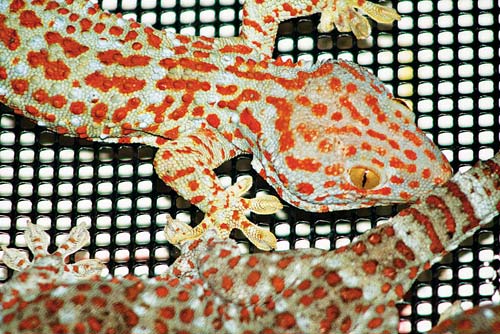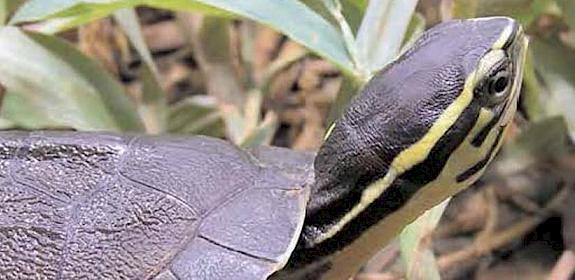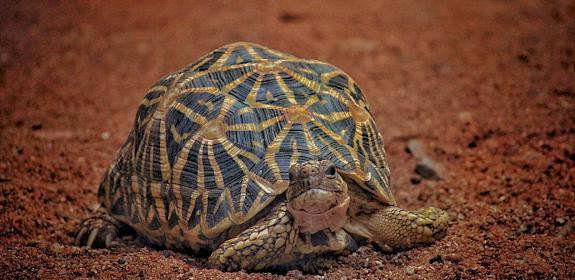Tokay Gecko trade boom in South-East Asia
Kuala Lumpur, Malaysia, 16th November 2011—Unfounded claims of a potential cure for Human Immunodeficiency Virus (HIV) is one factor behind a boom in the trade of Tokay Geckos, according to a new report launched today by TRAFFIC, the wildlife trade monitoring network.

The Tokay Gecko Gekko gecko is a nocturnal Asian lizard growing up to 40 cm in length and easily identified by its orange-spotted, blue-grey skin and unmistakable vocalizations.
The animals are popular in the global pet trade and have long been traded—both legally and illegally—for use in traditional Chinese medicine (TCM) in the belief they can cure various maladies including diabetes, asthma, skin disease and cancer. In parts of Asia, Tokay wine or whisky is consumed to increase strength and energy.
Between 1998 and 2002, more than eight and a half tonnes of dried Tokay Geckos were legally imported into the USA for use in traditional medicine. Huge numbers are traded within Asia, from countries such as Indonesia and Thailand, to meet demand, especially in China.
Recently, however, the medicinal demand for Tokay Geckos has skyrocketed, with dozens of new websites in Malaysia, a major hub of the trade, dedicated to buying and selling Tokay Geckos.
Messages have been circulating in online blogs, forums, newspaper articles, classified advertisements and amongst wildlife dealers in the region, extolling the consumption of Tokay Gecko tongue and internal organs as a cure for HIV and even cancer.
The geckos are being sourced across South-East Asia, especially the Philippines, where authorities have launched a crackdown on Tokay Gecko buyers amid growing reports of illegal trade in the animals.
One couple was recently arrested attempting to smuggle Tokay Geckos worth close to a million dollars from Thailand to Malaysia.
Indonesia exports an estimated 1.2 million dried Tokay Geckos from Java each year—the official export quota is 45,000 live animals, intended for the pet trade.
Two weeks ago, Customs officers in Central Java foiled an attempt to smuggle 6.7 tonnes of dried Tokay Geckos bound for Hong Kong and China using expired permits.
Unsurprisingly there are anecdotal reports of major Tokay Gecko population declines in Java and this picture is likely to be mirrored elsewhere.
However, the Tokay Gecko remains poorly protected by national legislation throughout most of its range and is not listed for protected under the Convention on International Trade in Endangered Species of Wild Fauna and Flora (CITES).
“TRAFFIC is alarmed at the massive increase in trade of these geckos,” said Chris R. Shepherd, Deputy Director of TRAFFIC Southeast Asia.
“If the trade continues to mushroom, it could take years to repair the damage currently being inflicted on gecko populations.”
“Protection under CITES should urgently be considered as a stitch in time for the Tokay Gecko.”
A short Animoto film highlighting the Tokay Gecko trade boom in Asia
According to the new report, published in the latest TRAFFIC Bulletin, underlying the current Tokay Gecko trade are “Incredible claims of miracle cures and vast monetary gains [that] may be indicative of an elaborate hoax. Perpetrated by whom, to what extent and in what capacity remains a mystery. What is clear, however, is that the demand for Tokay Geckos is leading to the rapacious collection of this species throughout South-East Asia.”
Also in the TRAFFIC Bulletin—which this issue focuses on South-East Asia—are articles on the region’s tortoises and turtles, carnivores, pangolins, the indigenous people of Belum-Temengor, and trade in birds-of-paradise.



